Recap: A Learning Computer at the Bad Game Arcade
As early home computing technologies became more available and affordable in the 1970s and 1980s, manufacturers experimented with various ways to introduce these objects into the home. They concurrently marketed these technologies as entertainment devices, as machines to facilitate home economics, and as educational tools that could not only assist children with their school curriculums but also instruct them on how to use computers themselves.
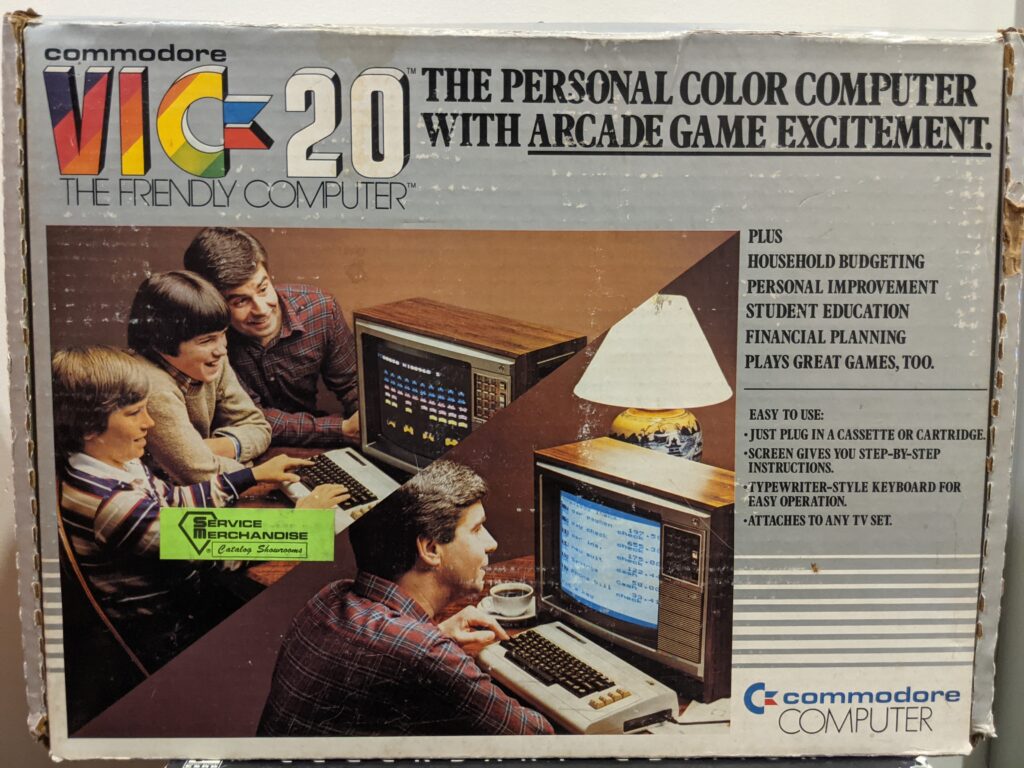
This blog post reflects upon some of our work centred around early home computing technologies as teaching tools. In February 2023, we exhibited several items from the Residual Media Depot’s collection at the Bad Game Arcade hosted at Concordia University’s 4th Space. Combining box art and advertising materials with a hands-on demonstration of emulated educational software, the goal of our installation was to complicate assumptions about early computing technologies.
Who were the imagined users of educational hardware and software? How effective were these technologies as teaching tools? And how does this history impact how we approach videogames today?
Videogames Before Videogames
When we talk about early videogame consoles, we often do so in a way that’s inherently anachronistic. Contemporary discourse on videogames—coloured by the entertainment industry—tends to overlook decades of use in homes, schools, and other venues that predates what we think of as videogaming.
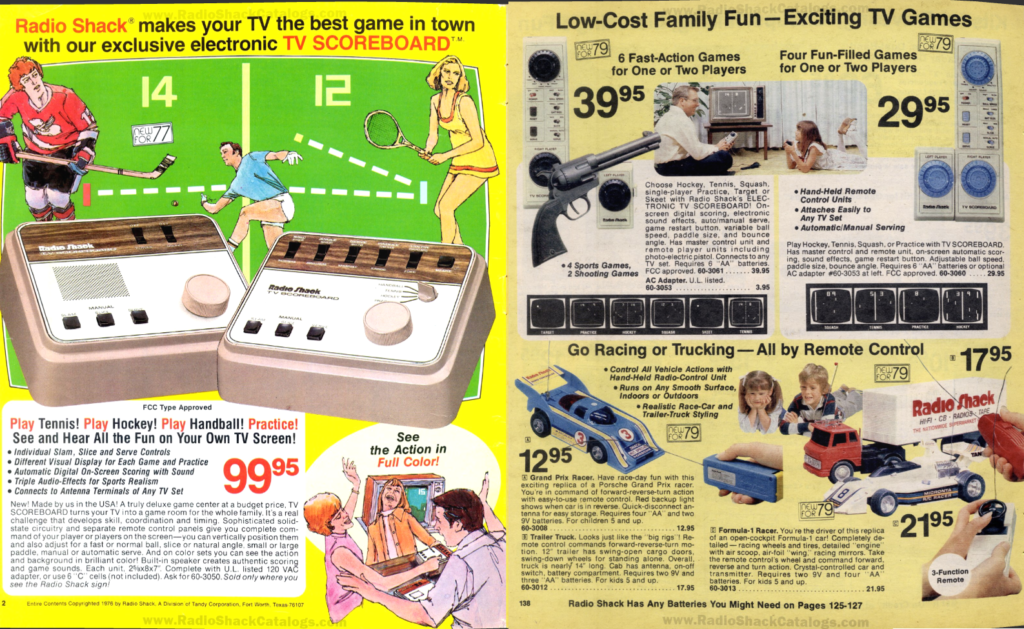
Before there were videogame aisles in big box stores or even videogame stores themselves, developers contemplated multiple potential uses for computing technologies. While we’re very familiar with their early use as entertainment devices—who, for instance, hasn’t played Pong or some sort of reimagining of it?—this was not always its sole use.
As hardware became increasingly sophisticated, developers began to imagine roles beyond play, ranging from productivity to education. For instance, early home computing technologies could be business machines to aid with work tasks, personal finances, and even recipe organization; or else they could be teaching tools for children.
Since early consoles circulated well before the marketing category of “videogames” existed, companies had to guide consumers on how, where, why, and by whom their objects should be used. This meant conceptualizing and visually articulating a set of imagined uses and users.
Thinking About the Box
Packaging, such as box art, instruction manuals, and other paper ephemera, helped companies construct the imaginaries of early computers. They did so through images that depicted idealized users interacting with the hardware, guiding potential consumers of these new devices on their vast array of promised uses.

Early box art began—as did popular images of televisions prior—by positioning these new technologies at the heart of the nuclear family, suggesting that such devices could help foster togetherness. Beyond play, however, box art also depicted women sorting recipe cards and young boys using the computer to help them with their homework, problematizing assumptions about early home computing technologies as belonging exclusively to the realm of gaming.
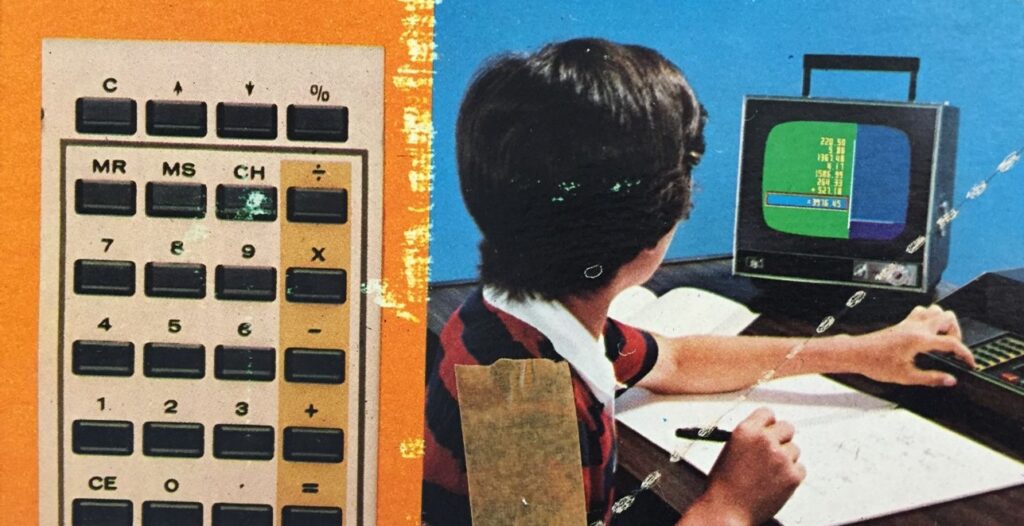
Are We Having Fun with Numbers?
The early era of home computing was rife with what we now call educational games, such as The Oregon Trail (1974), Cross Country Canada (1986), and Math Gran Prix (1982). For our installation at the Bad Game Arcade, we invited the audience to play the latter’s predecessor, a prototypical example of educational games at the time.
Originally released as Basic Math, Fun With Numbers was one of the Atari 2600’s 1977 launch titles. Today, we might think of it as a game only in the loosest sense of the term. Each match consists of a succession of ten arithmetic problems at the end of which the player is given a score based on how many they answered correctly. Players can choose between table (1-4) or randomized (5-8) versions of addition, subtraction, multiplication, or division for a total of eight riveting game modes.

In essence, Fun With Numbers operates as a series of digital flashcards where the interface is the Atari 2600 and its Joystick rather than paper and speech.
One of the most interesting aspects of the game’s packaging is the way the instruction booklet refers to Atari 2600 assemblage as the “Computer Teacher,” which explicitly frames it not as an entertainment device but as an educator. But how effective is it as a teacher?
(Hint: The symposium we attended was called the Bad Game Arcade.)
When the player inputs a correct answer, they receive a beep and a melodic tune in response. Wrong answers receive a different beep and tune before disappearing as the right answer flashes on the screen. Then, the “Computer Teacher” moves on to the next problem.

The Computer Teacher informs the player of the correct answer, but it doesn’t “show its work” or otherwise explain to the student how to refine their logic to solve the math problem. (Given that I’m a humanities scholar who goes through life with a supercomputer perpetually in their pocket, I certainly would have benefited from a reminder of how to do double digit multiplication.)
Educational materials are equally absent from the instruction manual; the manual teaches the player the mechanics of the game, but not the mathematical processes with which to play it. Fun with Numbers is neither particularly fun nor particularly useful as a teaching tool.
What Fun With Numbers effectively teaches isn’t math; it’s the affordances of the Atari’s hardware. The game is a terrible math instructor. As a launch title, however, the game teaches both developers and apprehensive consumers (read: parents) what the Atari 2600 can offer families within the home: not only entertainment but also the promise of learning.
Flash Forward to the Flashback
One of our primary goals at the Residual Media Depot is to make a case for how emulators (pieces of hardware or software that enable one computer system to behave like another) can operate as useful teaching tools. Consequently, a significant portion of our collection consists of videogame consoles that have been designed or modified to facilitate emulation.
Developed by AtGames under license from Atari, the Atari Flashback series consists of plug-and-play versions of the Atari 2600 that allow users to engage with dozens to hundreds of pre-loaded videogames. Designed to resemble smaller versions of Atari hardware—the console as well as its iconic joystick—the Atari Flashback series explicitly markets itself as a way to look back at residual hardware.
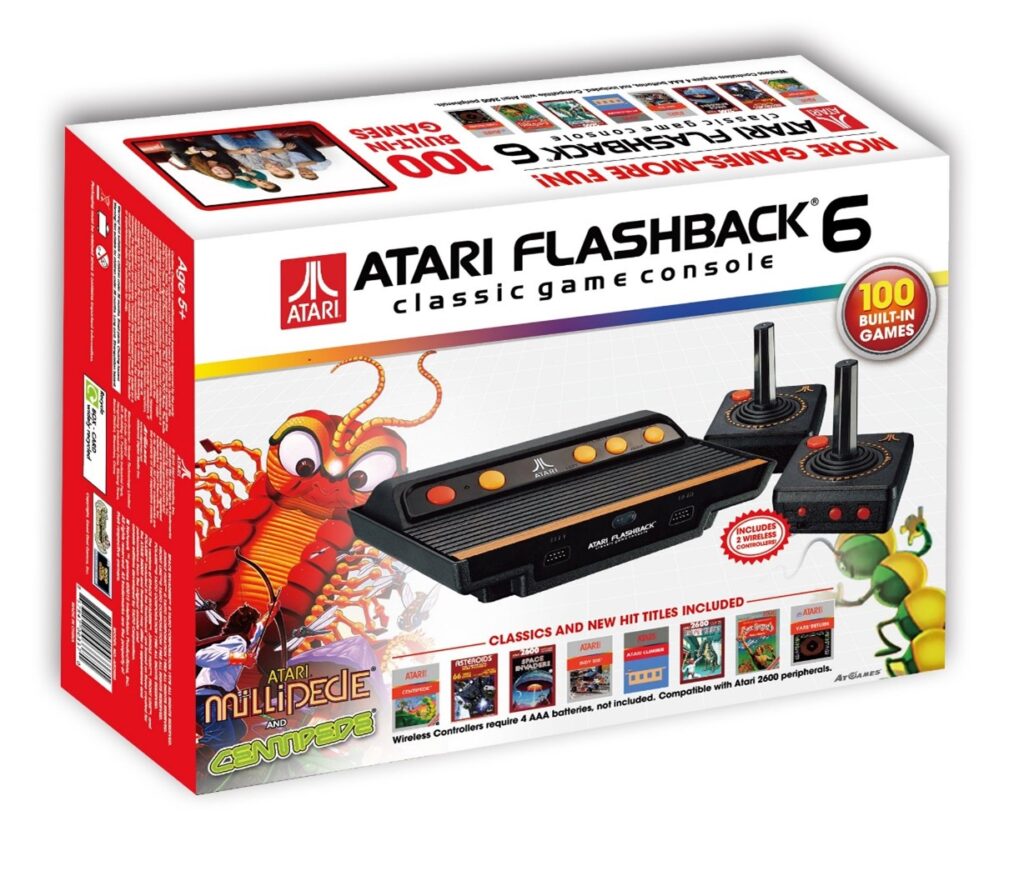
The Flashback also raises interesting questions about the authenticity of our research objects. The first device in the Atari Flashback line doesn’t actually run on Atari hardware; it runs on NES-on-a-chip architecture, an implementation of the Nintendo Entertainment System’s CPU and the base of the unauthorized “Famiclone” industry. Evidently, this is a step away from the “original” Atari 2600 hardware.
At the same time, the Flashback machines allow us to access out-of-print games that we may not otherwise be able to experience in a university setting. Retailing between $40-60 CAD, these systems are far more affordable as teaching tools and don’t require the same level of maintenance or supervision of the ageing, sometimes fragile, original hardware configurations.
Moreover, the eighth edition of the Atari Flashback also introduced HDMI output. This is important because it makes these systems far easier to connect to modern classroom televisions than an original Atari 2600, which requires numerous converters to translate the analog RF audiovisual signal to something legible to a digital television. (Or else demands that we wheel our own cathode ray tube television around campus, which we have done it and resolutely do not recommend doing in a Canadian winter!).
Teaching Past and Present
While our contribution to the Bad Game Arcade was nominally an introduction to educational games designed for early home computing technologies, it was also a reflection on teaching games in the present.
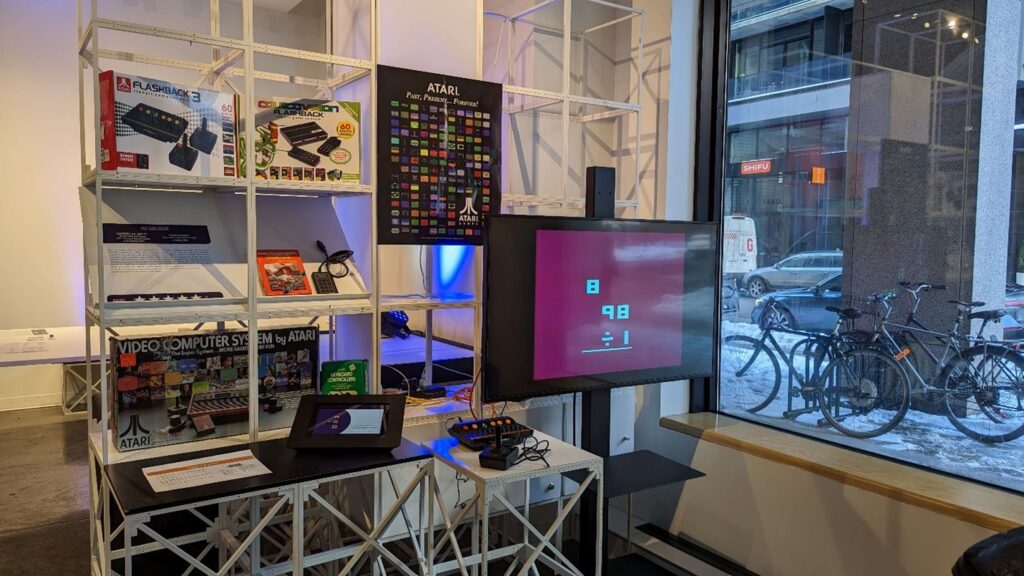
Objects like the Atari Flashback allow us to develop a pedagogical approach in which modding, emulation, and media archaeology come together to bring about new methods of teaching through computing technologies. Through devices like those in the Atari Flashback series, we can offer participants the ability to engage with early computing software in a hands-on way even if the hardware has been reimagined.
By placing these systems in conversation with early box art, we can explore how videogames positioned themselves as teaching tools in the past and how we can still use them as teaching tools today.